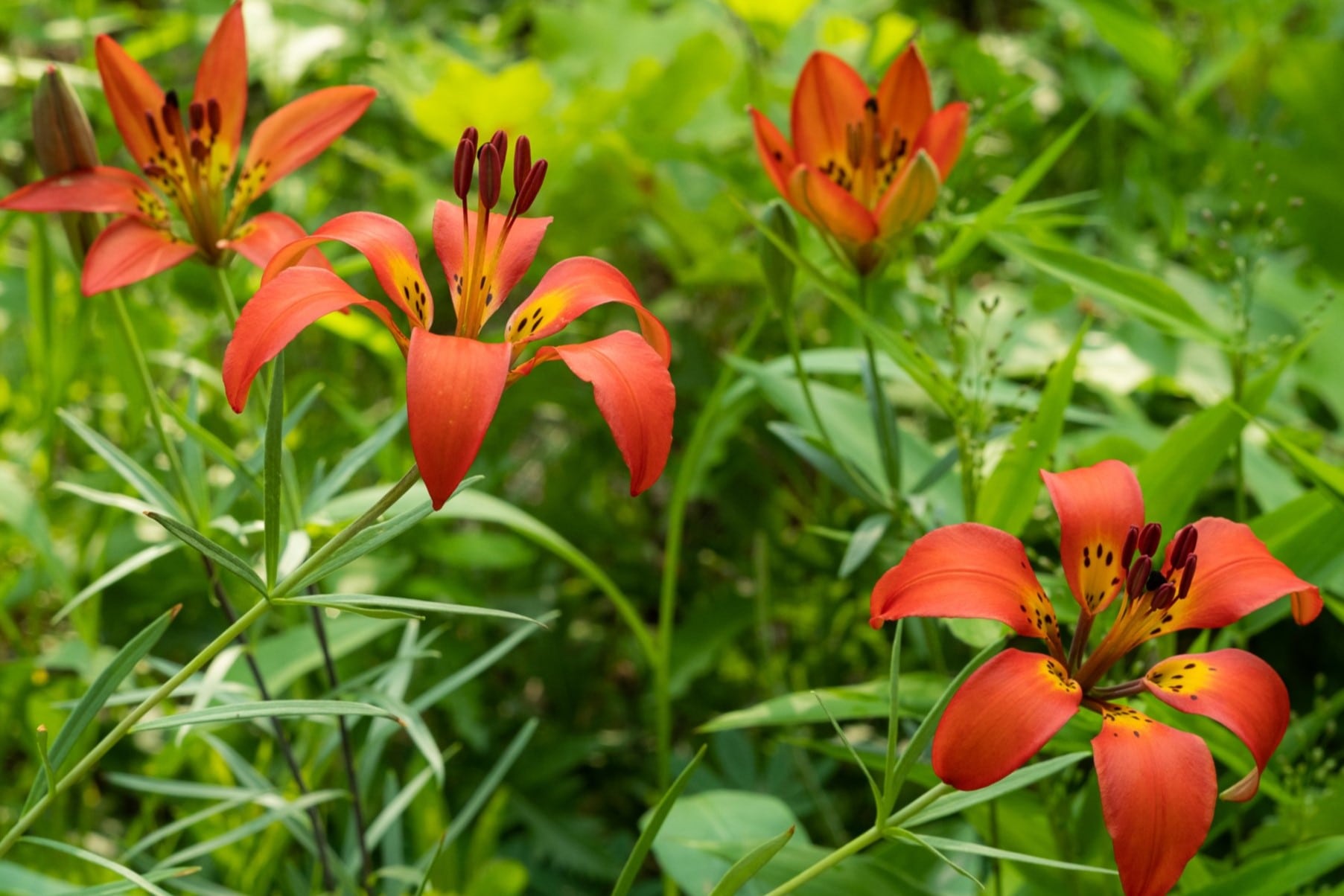
Wood lilies, scientifically known as Lilium philadelphicum, are captivating wildflowers that grace North American landscapes with their vibrant blooms. These striking perennials are cherished for their delicate beauty and are often sought after by nature enthusiasts and gardeners alike. From their unique physical characteristics to their cultural significance, wood lilies hold a wealth of fascinating traits that make them a subject of admiration and study. In this article, we will explore 11 intriguing facts about wood lilies, shedding light on their ecological role, symbolic meanings, and diverse uses. Join us on a journey through the enchanting world of wood lilies, where we uncover the allure and significance of these enchanting floral wonders.
Key Takeaways:
- Wood lilies, also known as Canada lilies, are vibrant wildflowers native to North America, symbolizing purity and attracting pollinators. They have medicinal uses and are cultivated for gardens, but are toxic to pets.
- Wood lilies are captivating wildflowers with a unique life cycle, inspiring art and poetry. However, they are vulnerable to habitat loss and are a subject of study for conservationists and botanists.
Wood Lilies Are Native to North America
Wood lilies are native to North America, where they can be found in various habitats, including woodlands, meadows, and prairies. These striking wildflowers are particularly abundant in regions with well-drained soil and plenty of sunlight.
They Are Perennial Plants
Wood lilies are perennial plants, meaning they can live for multiple years. Each year, the plant produces new stems and leaves from the same underground bulb, allowing the lilies to return and bloom season after season.
Wood Lilies Are Symbolic
In many cultures, wood lilies are symbolic of purity, renewal, and transience. Their elegant appearance and fleeting blooming period often make them a representation of beauty and the fleeting nature of life.
They Attract Pollinators
The vibrant, trumpet-shaped flowers of wood lilies attract various pollinators, including bees, butterflies, and hummingbirds. These pollinators play a crucial role in the lilies' reproductive cycle by transferring pollen from one flower to another.
Wood Lilies Have Medicinal Uses
Indigenous communities have long utilized wood lilies for their medicinal properties. Some traditional uses include using the plant in poultices to treat skin irritations and using infusions for their potential diuretic and laxative effects.
They Are Cultivated for Gardens
Due to their striking appearance and cultural significance, wood lilies are cultivated for gardens and landscaping. Their bright yellow, orange, or red blooms add a vibrant touch to floral displays and naturalistic garden settings.
Wood Lilies Are Toxic to Pets
While admired for their beauty, wood lilies are toxic to cats and can cause severe kidney damage if ingested. Pet owners should take precautions to prevent their animals from coming into contact with these plants.
They Have a Unique Life Cycle
Wood lilies have a unique life cycle that involves a period of dormancy during the winter months. This dormancy allows the plant to conserve energy and prepare for the following spring, when it will produce new growth and vibrant blooms.
Wood Lilies Are a Source of Inspiration
The striking beauty of wood lilies has inspired artists, writers, and poets throughout history. Their vibrant colors and delicate form often serve as a muse for creative works, celebrating the ephemeral nature of these enchanting wildflowers.
They Are Vulnerable to Habitat Loss
Despite their resilience, wood lilies are vulnerable to habitat loss due to factors such as urban development, agriculture, and land clearing. Conservation efforts are crucial to preserving the natural habitats where these wildflowers thrive.
Wood Lilies Are a Subject of Study
Due to their ecological significance and cultural importance, wood lilies are a subject of study for botanists, ecologists, and conservationists. Research on these captivating wildflowers contributes to our understanding of native plant species and their roles in diverse ecosystems.
Wood lilies, with their radiant blooms and rich cultural significance, continue to captivate and inspire admirers across North America. Whether gracing the wild landscapes or cultivated gardens, these enchanting wildflowers serve as a reminder of the beauty and fragility of the natural world.
Conclusion
Wood lilies are captivating wildflowers that add a touch of elegance to their natural habitats. Their striking appearance and resilience make them a cherished part of various ecosystems, captivating both nature enthusiasts and casual observers. With their vibrant colors and unique characteristics, wood lilies stand as a testament to the beauty and diversity of the plant kingdom. By understanding and appreciating these fascinating flowers, we gain a deeper appreciation for the intricate wonders of nature.
FAQs
Are wood lilies easy to grow?
Wood lilies thrive in well-drained soil and partial sunlight, making them relatively easy to grow in suitable conditions. However, they are best left to flourish in their natural habitats to preserve their delicate balance within the ecosystem.
Do wood lilies have any medicinal uses?
Wood lilies have been traditionally used in some herbal remedies, but caution should be exercised as they contain toxic compounds. It is crucial to consult a knowledgeable herbalist or healthcare professional before using wood lilies for medicinal purposes.
Was this page helpful?
Our commitment to delivering trustworthy and engaging content is at the heart of what we do. Each fact on our site is contributed by real users like you, bringing a wealth of diverse insights and information. To ensure the highest standards of accuracy and reliability, our dedicated editors meticulously review each submission. This process guarantees that the facts we share are not only fascinating but also credible. Trust in our commitment to quality and authenticity as you explore and learn with us.
